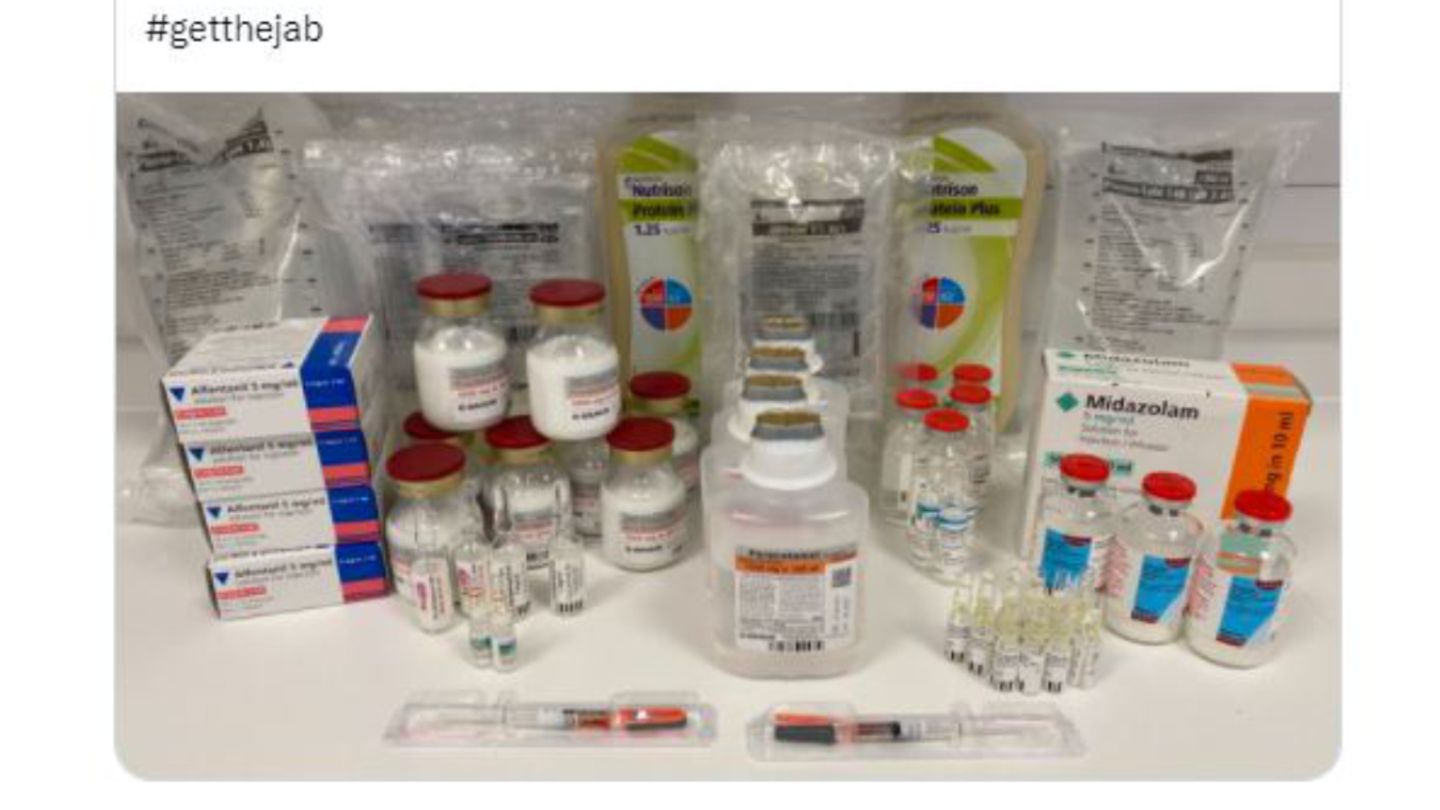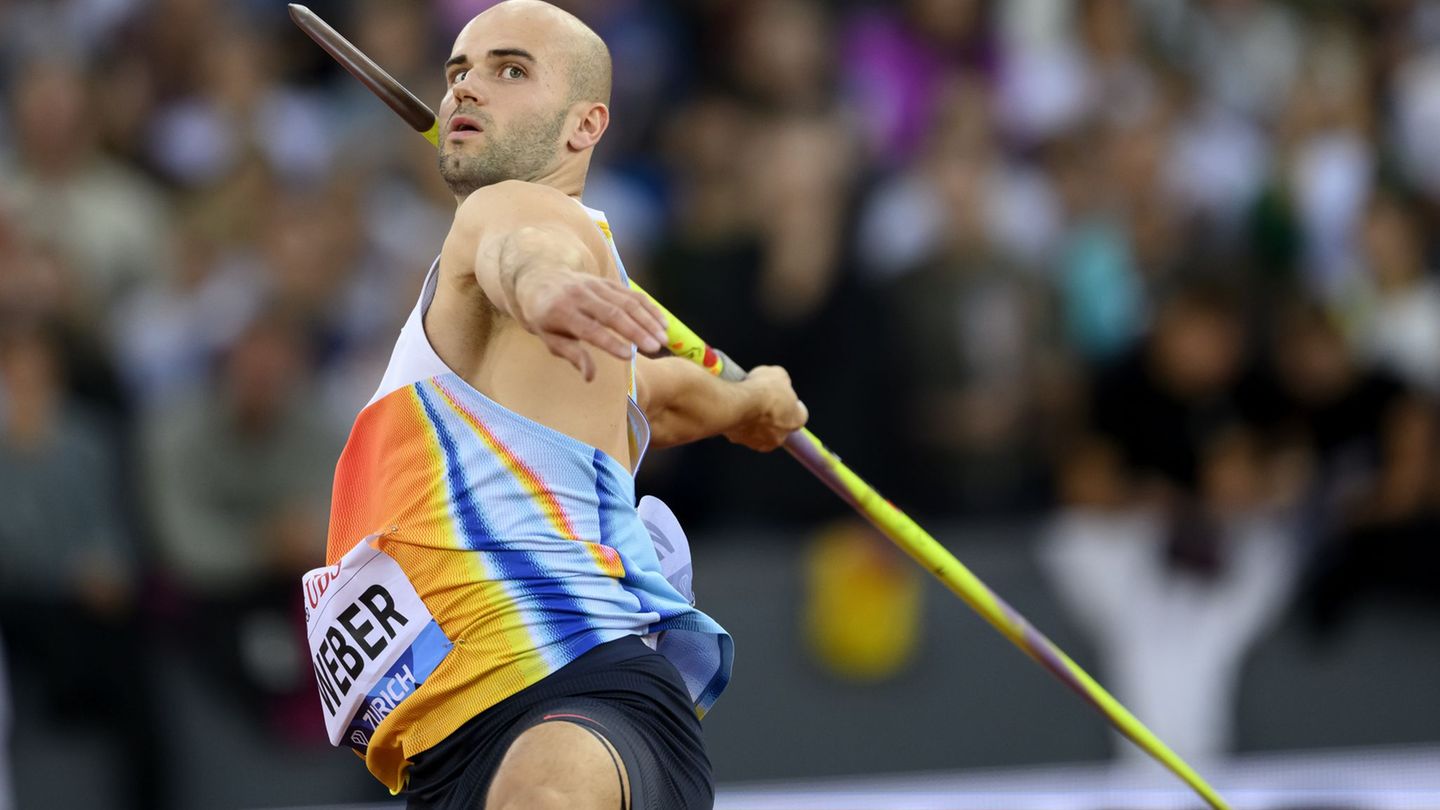A picture on Twitter caused a sensation that was supposed to show the daily medication needs of a ventilated Covid-19 patient. Of the stern spoke to intensive care physician Stefan Kluge about how realistic the photo is and what side effects the individual preparations have.
Dozens of ampoules, vials and infusions can be seen: “That is very impressive,” writes the Berlin virologist Christian Drosten on Twitter about a picture that shows the daily medication needs of a ventilated Covid-19 patient. The recording and the accompanying tweet are originally from David Frocester, who, according to media reports, works as an intensive care doctor at the Gloucestershire Royal Hospital in the UK.
“All this medication is needed to care for a Covid patient in the intensive care unit for one day,” writes Frocester. He argues that it only takes a single vaccine to prevent all of this. He closes the post with the call to be vaccinated: “#getthejab”.
With the photo and the accompanying message, the Briton has apparently hit a nerve in times of high infection rates and weak vaccination rates. The tweet has been liked more than 37,000 times and received more than 14,000 retweets. But is the list consistent and which means can be seen in detail? That’s what the stern spoke to the intensive care physician Professor Stefan Kluge.
Intensive care physician about corona medication
The representation is “realistic”, explained Kluge, and director of the Clinic for Intensive Care Medicine at the University Hospital Hamburg (UKE), on request. The photo shows drugs that are used in a ventilated Covid-19 patient and provides an overview of the daily medication.
Invasively ventilated patients are supplied with oxygen through a plastic tube in the windpipe and lie in an artificial coma. Essentially, what is needed are anesthetic drugs (midazolam, right; propofol, milky substance to the left of the center), artificial nutrition and fluid supply (bags with protein, glucose and plasmalyte infusion solution in the background) and drugs to stabilize the circulation (norepinephrine, third and fourth medium-sized ampoule from the left), says Kluge.
Also on display are alfentanil, a pain reliever that is used in an artificial coma, and paracetamol. There are also dexamethasone, a cortisone that lowers mortality in ventilated Covid-19 patients and those who need additional oxygen, and atracurium, a muscle relaxant that makes artificial ventilation easier. In the foreground are two syringes with heparin, which is supposed to prevent blood clots.
“On average, a ventilated Covid-19 intensive care patient receives 15 different medications,” said Kluge, who recently helped update the. The presentation therefore shows the essential means.
Side effects of the drugs
The drugs, which are supposed to ensure the survival of the patients, also harbor certain risks, emphasized the expert. The known side effects of anesthetics would include severe fluctuations in blood pressure. Midazolam can have a long-lasting effect in older patients and trigger states of confusion (delirium). According to the expert, means to stabilize the circulation can cause skin damage or irritation of the veins. There are also risks of artificial nutrition, including infections.

The risk of side effects of Covid-19 medication alone “significantly” exceeds that of vaccination, according to Kluge. And the additional risks of artificial ventilation and Covid-19 disease are not even considered. “For us intensive care physicians it is therefore extremely incomprehensible that so many people in Germany do not get vaccinated.”
Stiko recommends boosters from the age of 70
Studies show that corona vaccinations significantly reduce the risk of getting seriously ill with Covid-19. A study by the French Epi-Phare Institute with data from around 7.7 million fully vaccinated people aged 50 and over found that vaccines from Biontech / Pfizer, Moderna and Astrazeneca reduce the number of expected severe disease courses in this age group by more than 90 percent . Elderly and previously ill people can refresh their vaccination protection with a booster vaccination. (Stiko) recommends the “Booster”, for example, for people over 70 years of age and immunocompromised.
2616 Covid-19 patients are currently being treated in intensive care units in Germany (as of November 8), the numbers have been rising sharply for several weeks. The nationwide seven-day incidence of new infections continues to climb. On Tuesday, it reached its highest level since the beginning of the pandemic for the second day in a row and, according to the Robert Koch Institute (RKI), was 213.7.
In the opinion of experts, 67.1 percent is too low to bring the highly contagious Delta variant under control and to prevent heavy loads on the intensive care units. that an estimated 85 percent of 12 to 59 year olds and 90 percent of senior citizens aged 60 and over must be vaccinated for this.
In view of the current figures, various measures to contain the virus are currently being discussed again – the proposals range from a nationwide 2G regulation to the reintroduction of free citizen tests. Experts agree on one point: The vaccination rate must continue to rise, as unvaccinated people will have a high risk of contracting the coronavirus in the coming weeks and months.
Source From: Stern




